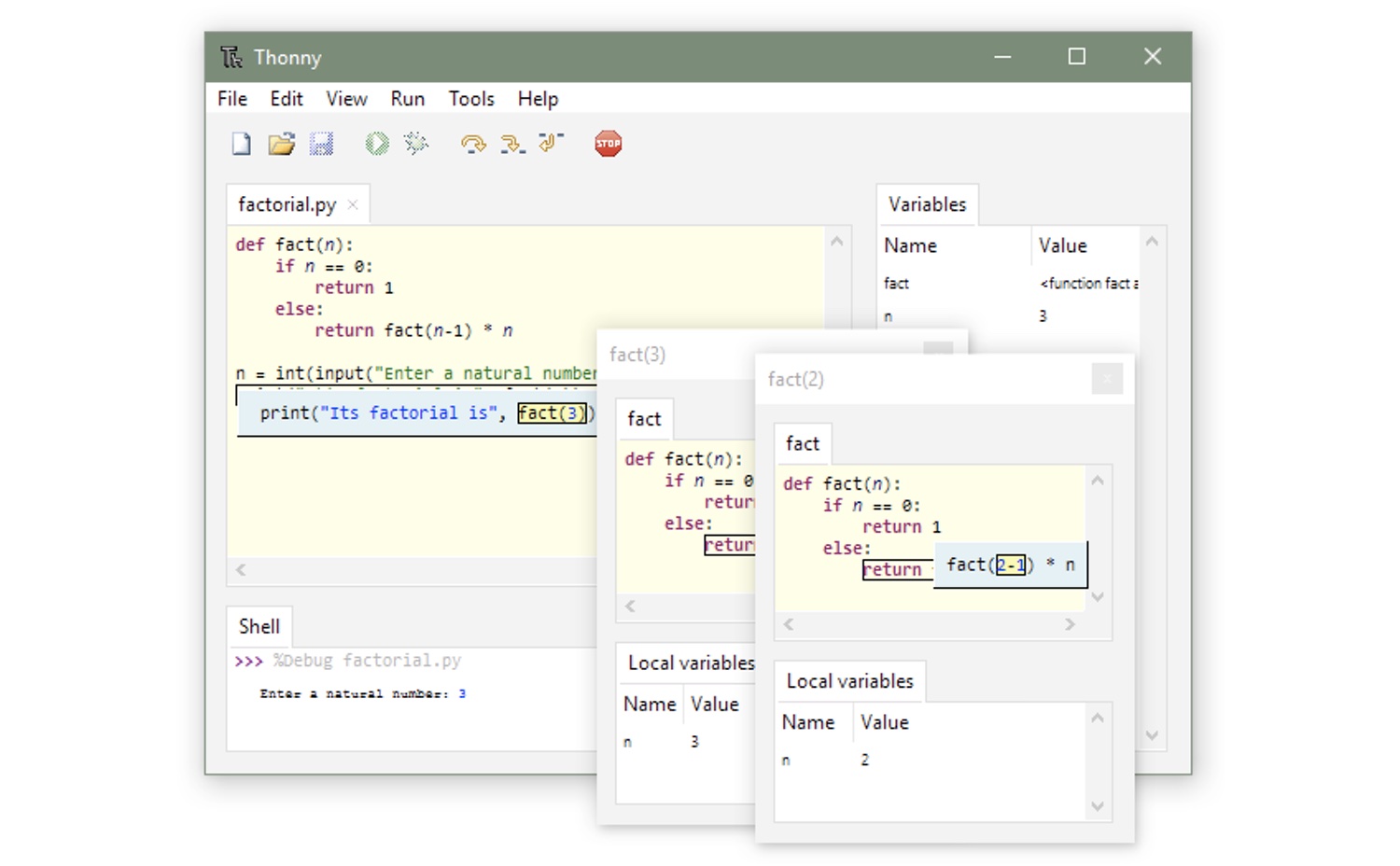


And here, I’m just going to load up first.py back on the Mac.Ġ1:55 And, as you’ll see, is your traditional “Hello, World!” program, which we’re going to run in a second. So again, opening that up, navigating to the right folder, and then opening a pre-created file will allow that to be opened using the OK button-in this case at the top right.Ġ1:47 Whichever platform you’re on, you’re probably used to it and you’ll know what it is. So, we click Open and move to Documents and where my Python files for this course are stored.Ġ1:31 And here it is in Ubuntu. If we try to close it, it will ask if we want to save it before closing, so it will help you not get rid of work that hasn’t been saved.Ġ1:05 The next button is Open, that familiar folder icon, and when you click that you get the standard file selector, depending on which platform you’re on.Ġ1:14 So, this is on Mac, where you can see three files available. And just to demonstrate that they’re different, I can type 1 in one, 2 in the other, and flip between them, and you can see they are different.Ġ0:51 The star ( *) means the file has not been saved yet, and a new file will have the name. Starting on the left, we’ve got New, which is Command or Control + N, depending on the platform that you’re on, and that will create a new file.Ġ0:37 So clicking it, we can see we’ve got a new file here. Here we are in Thonny, and we’re going to take a look at the icons- some of which are going to be familiar, some of them won’t.Ġ0:23 So, the first few are standard icons, which you’ve probably seen if you’ve used a word processor, et cetera. Let’s look first at creating, saving, and opening files.
THONNY EXAMPLE CODE
00:06 Thonny’s user interface is designed to help you write code quickly and efficiently and run it.


 0 kommentar(er)
0 kommentar(er)
